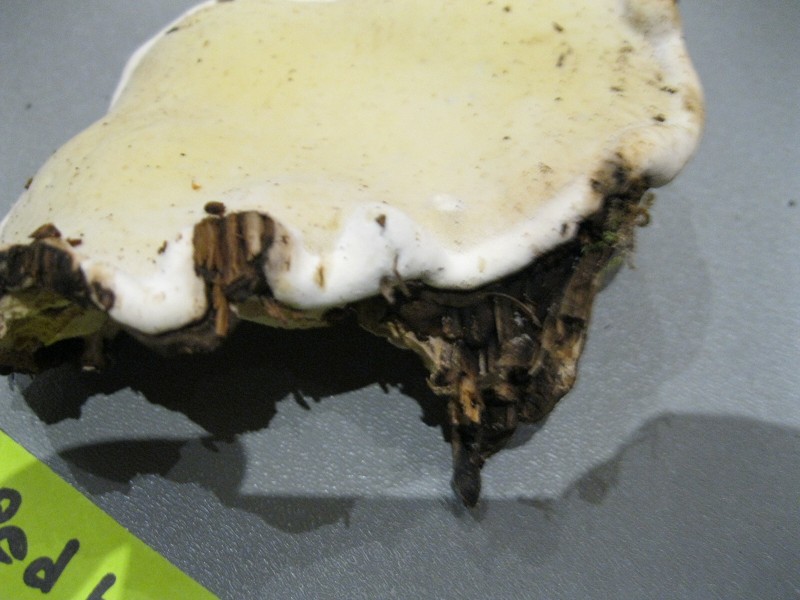
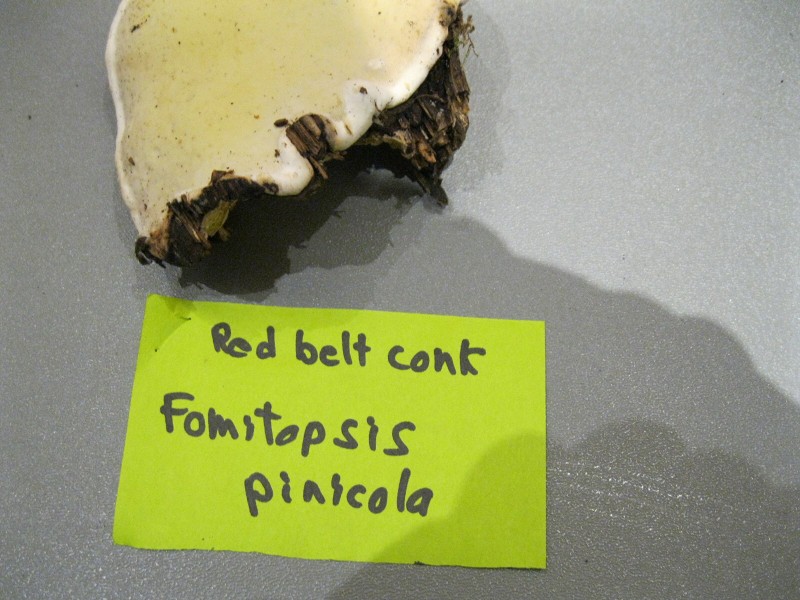
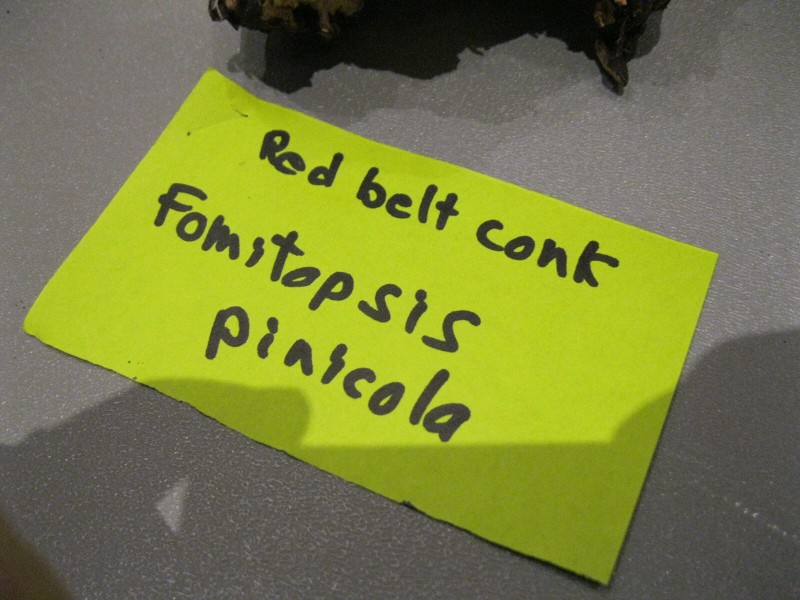
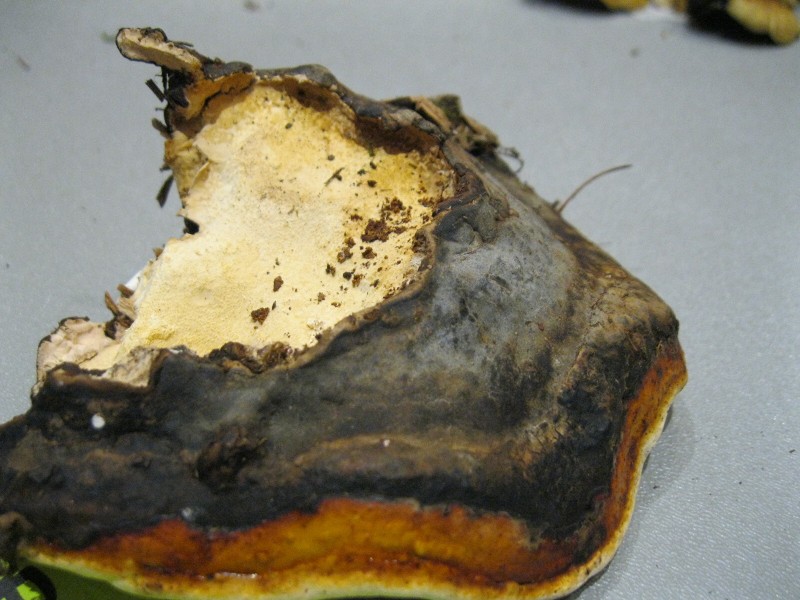
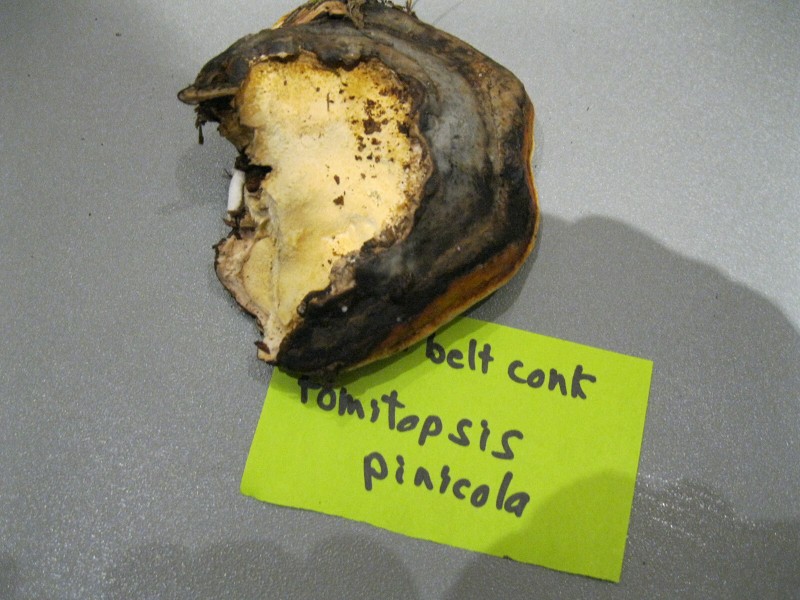
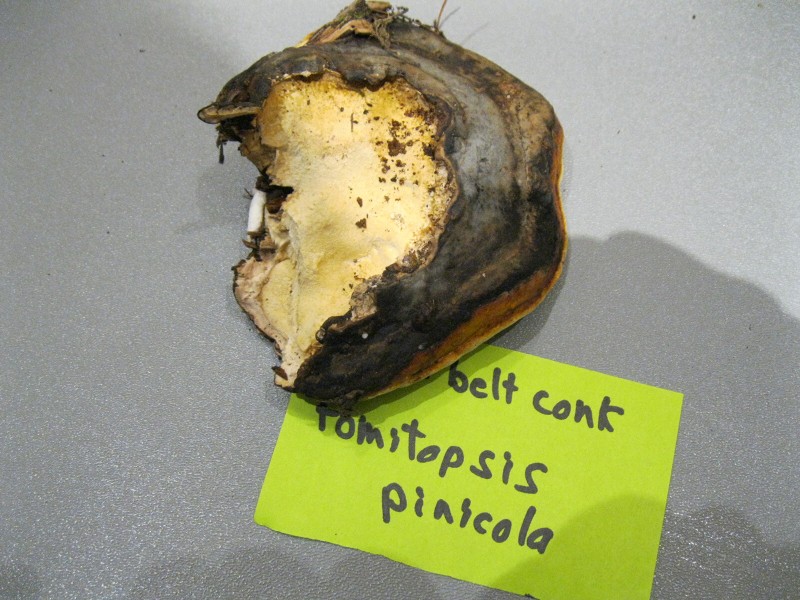
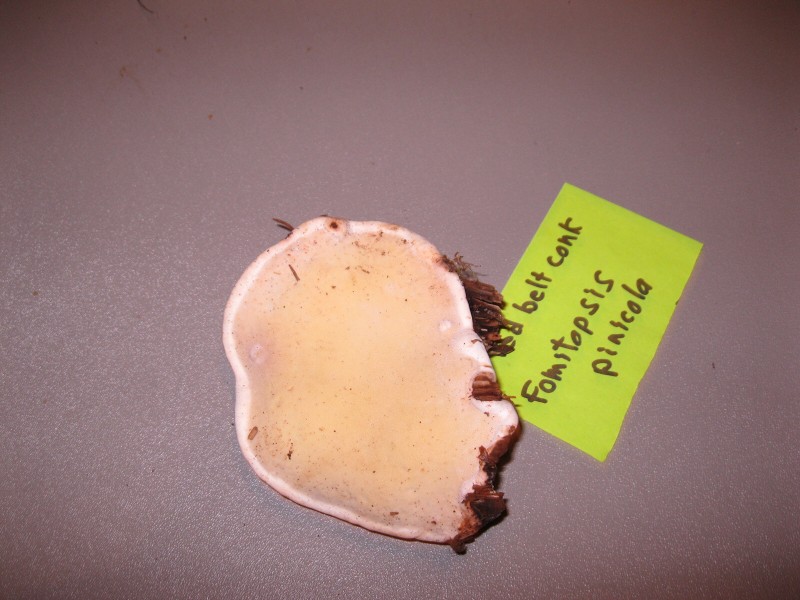
Wikipedia says:
Fomitopsis pinicola, in English sometimes known as Red Banded Polypore,
is a polypore mushroom of the genus Fomitopsis.
The species is common throughout the temperate Northern hemisphere.
An alternative binomial name is Fomes pinicola.
Characteristics
Cap hoof-shaped or triangular, hard and tough texture, up to 30-40 x 25 x 10 cm.
Surface is more or less smooth, at first orange-yellow with a white margin,
later dark reddish to brown and then frequently with orange margin.
Pore surface pale yellow to leather-brown, 3-4 pores per mm.
Grows on live and dead coniferous or (less common) deciduous trees.
The fruiting body of Fomitopsis pinicola is called the conk.
It is a woody, pileate fruiting body with pores lined with basidia on its underside.
As in other polypores, the fruiting body is perennial with a new layer of pores produced
each year on the bottom of the old pores.
This mushroom is inedible due to its woody texture, but it is useful as tinder.
Mykoweb.com says
The woody conks of Fomes pinicola are dark-brown to blackish-brown typically with a varnished,
orange-brown marginal band. Ganoderma applanatum,
the Artist Conk is similar, though usually not as dark.
Its pores bruise brown, as opposed to yellow-buff, lacks a brightly colored marginal band,
and has brown rather than pale yellow spores.
Fomitopsis pinicola conks may grow for many years, each season adding a new layer of tubes.
Counting the tube layers, somewhat analagous to counting tree rings, gives a
rough idea of the age of the conk.
Fomitopsis pinicola is an important decayer of conifer wood.
It is generally described as a saprophyte but in some areas is know to attack living trees.
Mushroom Expert.com says:
Fomitopsis pinicola is one of the most conspicuous and widely distributed polyporesin coniferous
forest regions of the northern hemisphere.
It is a major factor in the production of brown rot residues that are a stable soil
component in coniferous forest ecosystems.
Distinguishing features for Fomitopsis pinicolainclude its tough,
woody consistency (it is perennial, and develops a new tube layer every year);
the varnished cap surface that is usually red to
reddish brown with a white or yellow margin; the cream colored pore surface that does not bruise brown;
and the red reaction of the flesh to KOH. Similar species include Ganoderma tsugae (annual and corky,
rather than perennial and woody) andHeterobasidion annosum (with less clearly defined, browner caps).
Description:
Ecology: Saprobic on the dead wood of conifers and sometimes hardwoods
(including birch andaspen); also sometimes parasitic on living trees;
causing a brown cubical rot; growing alone or gregariously;
perennial; fairly widely distributed in North America where conifers are present,
but apparently rare to absent in the southeastern United States.
Cap: Up to about 40 cm across and 10 cm deep; semicircular or fan-shaped;
convex or hoof-shaped; smooth, becoming wrinkled with age;
appearing varnished toward the margin (and overall when very young);
red to dark brownish red (or brown to black toward the point of attachment or when mature),
with a white to yellow marginal area.
Pore Surface: Cream colored; not bruising significantly;
with 3-6 round pores per mm; tube layers usually fairly distinct, up to 8 mm deep.
Stem: Absent.
Flesh: Whitish; leathery to woody.
Odor: Musty and strong when fresh.